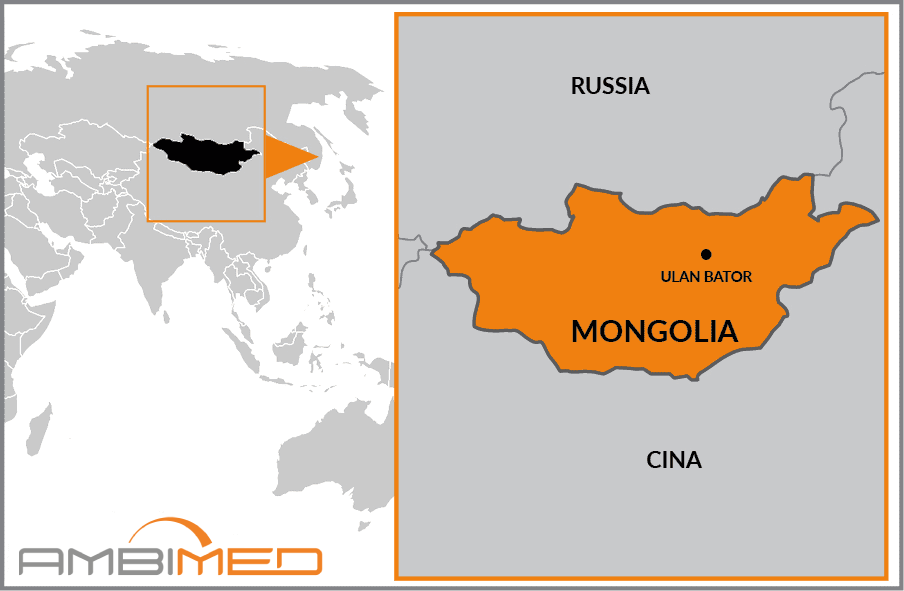Ambimed-Group
Travel Medicine
Business Travel Medicine
Easily manage your reservations and stay constantly updated on Ambimed services.

|
Country Name |
Mongolia |
|
Continent |
Asia |
|
Surface area |
1,564,160 km2 |
|
Capital |
Ulaanbaatar |
|
Population |
3,081,677 |
|
Language |
Khalkha Mongol (Mongolian) |
|
Currency |
Tughrik or Tigrik (MNT) |
|
Time zone |
+7hrs in relation to Italy |
|
Area code for Italy |
0039 |
|
Area code from Italy |
00976 |
Yellow fever vaccination is mandatory for all travelers over 1 year old from at-risk countries or who have transited for more than 12 hours at airports in at-risk countries.
This viral disease is transmitted by the bite of infected ticks. Vaccination is recommended for stays in settings where the risk is higher. The risk decreases in the winter months.
Hepatitis A is generally transmitted through contaminated food and water, or through close physical contact with an infected person, while hepatitis B is transmitted through exposure to infected body fluids and blood.
Infection typically occurs through contact with the saliva of an infected animal, usually through bites, scratches or licks near open wounds or membranes (mouth, nose, eyes). The most common vectors are dogs and bats, but cases of infection in other domestic animals have also been reported.
Caused by toxins released by the bacterium Clostridium tetani, there is an endemic risk of contracting tetanus throughout the country.
Bacterial in origin, typhoid fever is transmitted through contaminated food and drink, especially in regions where sanitation conditions are poor.
Tuberculosis is an airborne disease of bacterial origin. Vaccination is recommended for all travelers at risk of developing severe symptoms or of coming into contact with infected individuals. It is likewise recommended for all travelers under the age of 16 who plan to reside in the country for more than 3 months
Diseases such as Leishmaniasis and Japanese River Typhus are found in Southeast Asia. Transmitted by insect bites and with no vaccine, it is important to take preventive measures with behavioural prophylaxes.
The following vaccinations are strongly recommended as these diseases can be contracted anywhere in the world. Experts advise that you protect yourself and other travellers by making sure you are up-to-date with all of the recommended vaccinations. This will allow you to travel safely, while minimising the risk of exposure to infection.
A state in East Central Asia, it borders Russia to the north and China for the rest.
The terrain is generally high, with elevations rarely going below 1,000 metres above sea level. The south-eastern region consists of highlands that form the northern foothills of the Gobi Desert, while the western and northern parts are dramatically mountainous. The highest elevation is the Huyten Orgil (4374 metres), at the junction of the western borders with China and Russia. Finally, the north-western end of the country consists of a series of depressions occupied by salt lakes.
The climate is continental, with extremely cold winters (temperatures reach -40°C) and hot summers when temperatures can reach 35°C. Rainfall is low throughout the territory and almost completely absent in the Gobi.